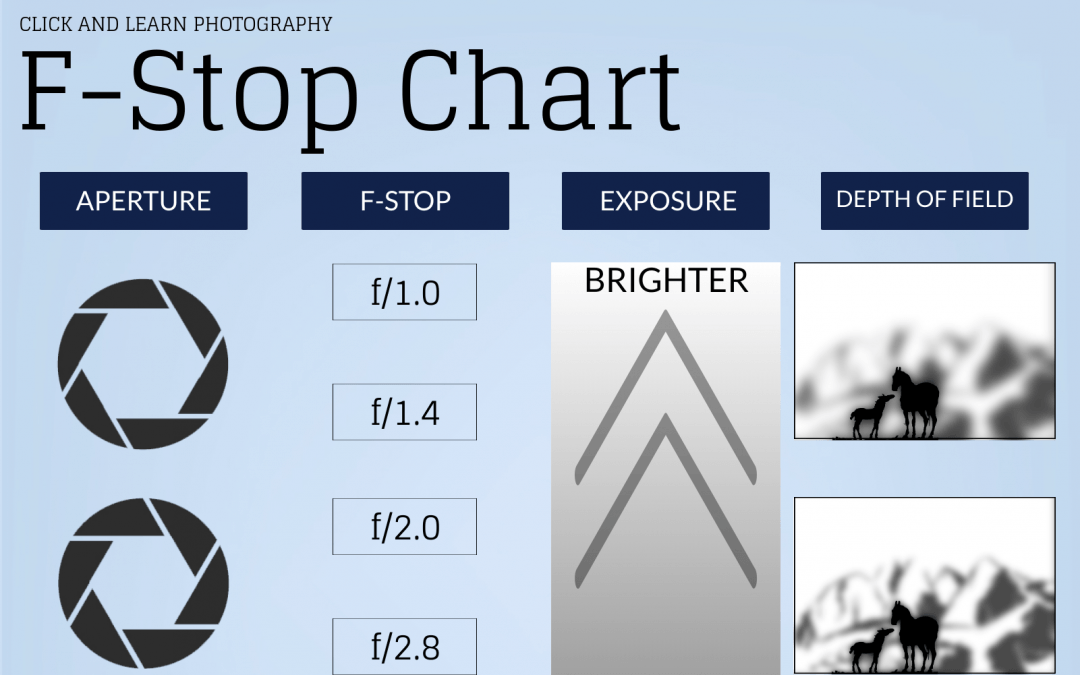
To play it safe, shoot at the recommend f-stop but also at 1/2 and 1 stop smaller apertures. If you are unsure of exactly where that point is, for example the calculator tells you to focus at 8 feet and you have no measurement tool, take a photo focusing at where you think 8 feet is and also take photos focusing in front of and behind that spot.

The hyperfocal point is the spot that you want to focus upon. – Use a Depth of Field calculator to determine the hyperfocal point and the appropriate f-stop to use to obtain your desired depth of field. As the f-stop number gets larger the depth of field increases. So the important points to remember concerning Depth of Field, Hyperfocal Point and F-Stops. If I had used f11, everything would have been in focus. Notice how the hair toward the back of her head is out of focus as well as her left shoulder. I wanted the background to be out of focus and blurry. I intentionally wanted a shallow depth of field so I used the widest aperture (smallest f-stop number) for this lens, f1.4. This portrait of a young girl in Rajasthan, India is an example of a photograph that has very little depth of field. I did not have depth of field concerns and was able to shoot at my sharpest f-stop for this lens and to focus on the most important element, the farmhouse. The closest subject matter was 70 feet away. This scene does not have a subject in the near foreground. What about a scene like the above photo from Tuscany? I used an f-stop of 5.6. I would also shoot one at f16 to play it safe. tells me where to focus, 4 feet, and to set my f-stop between f11 and f16. In the example above for the previous photo, I entered into the calculator the focal length of my lens, 17 mm, the distance to the nearest subject that I want in focus, 2 feet, the distance to the farthest subject that I want in focus, infinity. Four feet is where to focus and that spot is called the Hyperfocal Point.Ĭalculating which f-stop to use for optimum depth of field for each scenario is more complicated but can be simplified by using a smart-phone app. To determine the point to focus upon we use a simple formula: multiply the distance from your camera to the nearest object that you want in focus by a factor of two. So if you do have a subject that has a great range from near to far and you want everything in focus, how do you determine which f-stop to use and at which point to focus upon? For the scene above of the poppy field in Tuscany I was able to get everything in focus from the nearest poppy to infinity. When you use a smaller aperture than f16, such as f22 you start to loose the benefits of increased depth of field as the photograph starts to become negatively impacted by diffraction. It is advisable to not go beyond f16 when stopping down your lens in most situations. The larger the f-stop number the smaller the opening of your lens aperture and the greater depth of field.

The smaller the f-stop number the larger the opening of your lens aperture and the less depth of field.

Each lens has a sweet spot aperture that is typically 3 stops smaller than the widest aperture…this will be the sharpest aperture. Also, often the larger apertures are sharper. The advantage of using a larger aperture is that it allows more light in and we can therefore shoot at faster shutter speeds and not have to use a tripod. For the scene of the distressed wall in Burano, Italy, with a very shallow depth of field, we can use a larger aperture (smaller f-stop number). The smaller the aperture (large f-stop number) the greater the depth of field the camera will capture. In order to get everything in focus in a scene such as the lavender field we need to chose an f-stop that will allow this. This scene has a very large depth of field. This photo of the lavender fields in Provence, France has a very large range from near to far, over 100 feet. This scene has a very shallow depth of field. This photo of the distressed wall in Burano, Italy has very little range from near to far, about 4 inches between the surface of the wall and the shutter. Let’ start with the definition of Depth of Field: “ The range in a photograph, from near to far, that appears to be in focus.”

If you are serious about getting more than just snapshots while traveling and are using a camera that allows you to chose your point of focus and f stop then it is important to understand the relationship between f-stops (apertures), depth of field and where to focus in a scene.


 0 kommentar(er)
0 kommentar(er)
